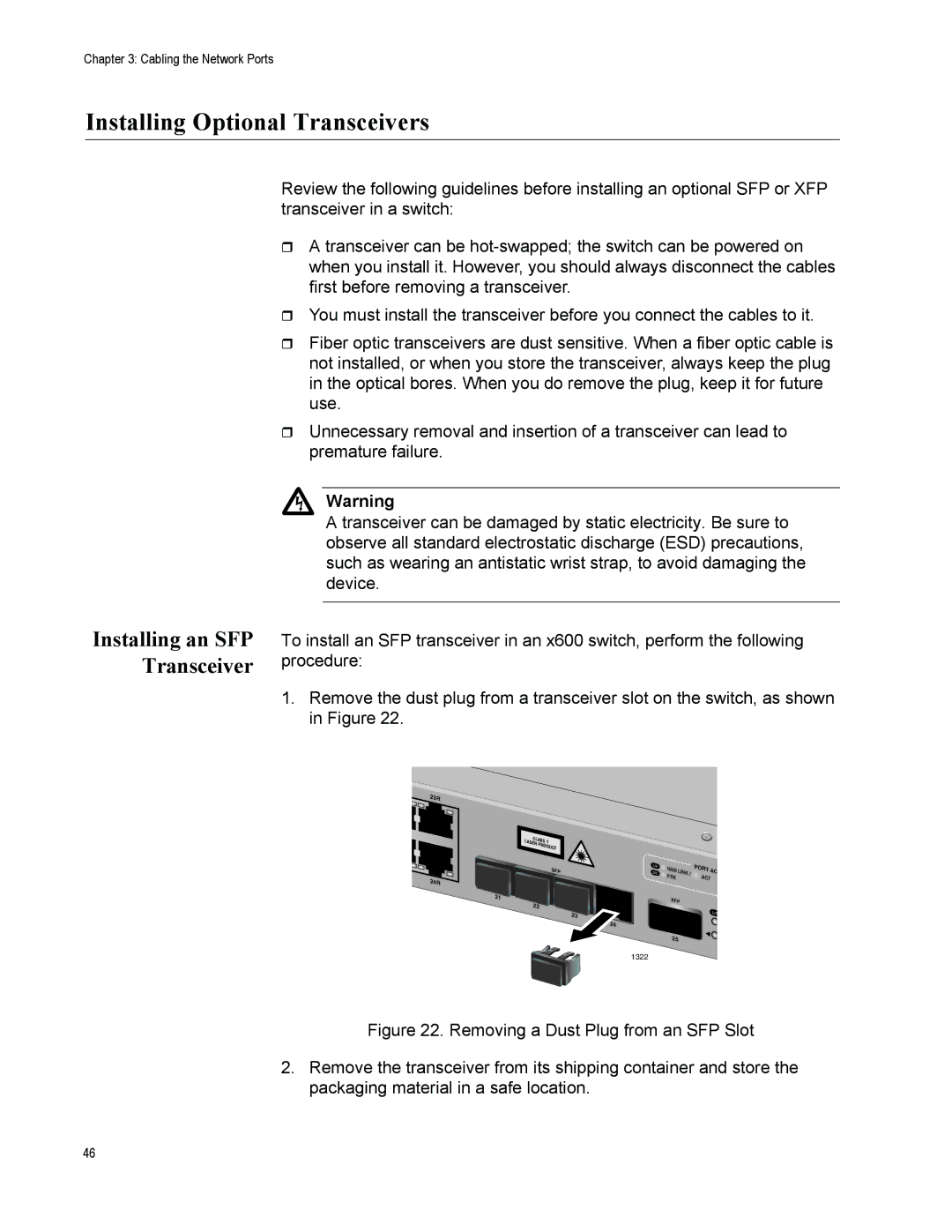
Chapter 3: Cabling the Network Ports
Installing Optional Transceivers
Installing an SFP Transceiver
Review the following guidelines before installing an optional SFP or XFP transceiver in a switch:
A transceiver can be
You must install the transceiver before you connect the cables to it.
Fiber optic transceivers are dust sensitive. When a fiber optic cable is not installed, or when you store the transceiver, always keep the plug in the optical bores. When you do remove the plug, keep it for future use.
Unnecessary removal and insertion of a transceiver can lead to premature failure.
Warning
A transceiver can be damaged by static electricity. Be sure to observe all standard electrostatic discharge (ESD) precautions, such as wearing an antistatic wrist strap, to avoid damaging the device.
To install an SFP transceiver in an x600 switch, perform the following procedure:
1.Remove the dust plug from a transceiver slot on the switch, as shown in Figure 22.
23R |
|
|
|
|
|
|
|
|
| CLASS 1 |
|
|
|
| |
|
| LASER | PRODUCT |
|
|
|
|
|
|
| L/A | 1000 | LINK / | PORT | AC |
|
|
| D/C | ||||
|
|
| FDX | ACT | |||
24R |
|
|
|
| |||
|
|
|
|
|
|
| |
| 21 |
|
| XFP |
|
| |
|
| 22 |
|
| |||
|
|
|
|
|
| ||
|
|
| 23 |
|
|
| L/A |
|
|
|
|
|
|
| |
|
|
| 24 |
|
|
|
|
|
|
|
| 25 |
|
| |
|
|
| 1322 |
|
|
|
|
Figure 22. Removing a Dust Plug from an SFP Slot
2.Remove the transceiver from its shipping container and store the packaging material in a safe location.
46
